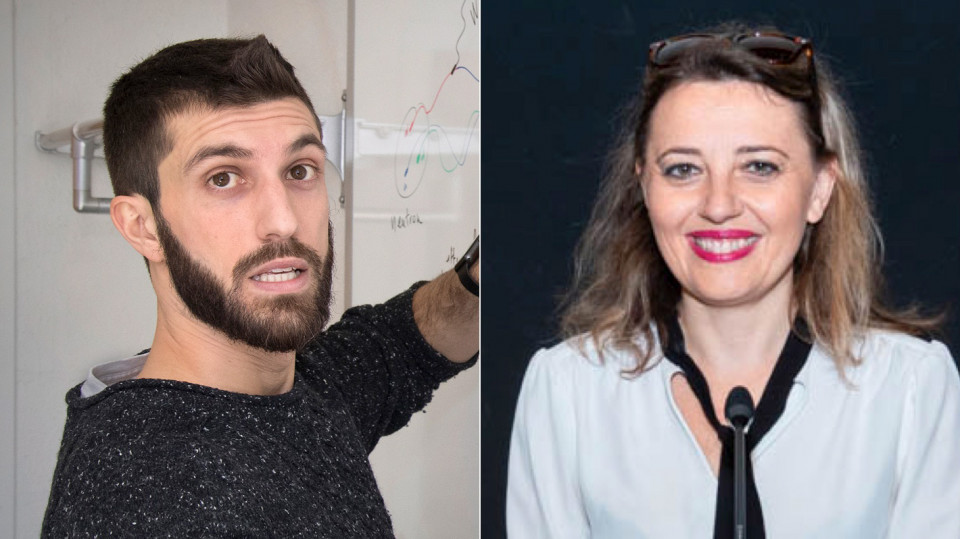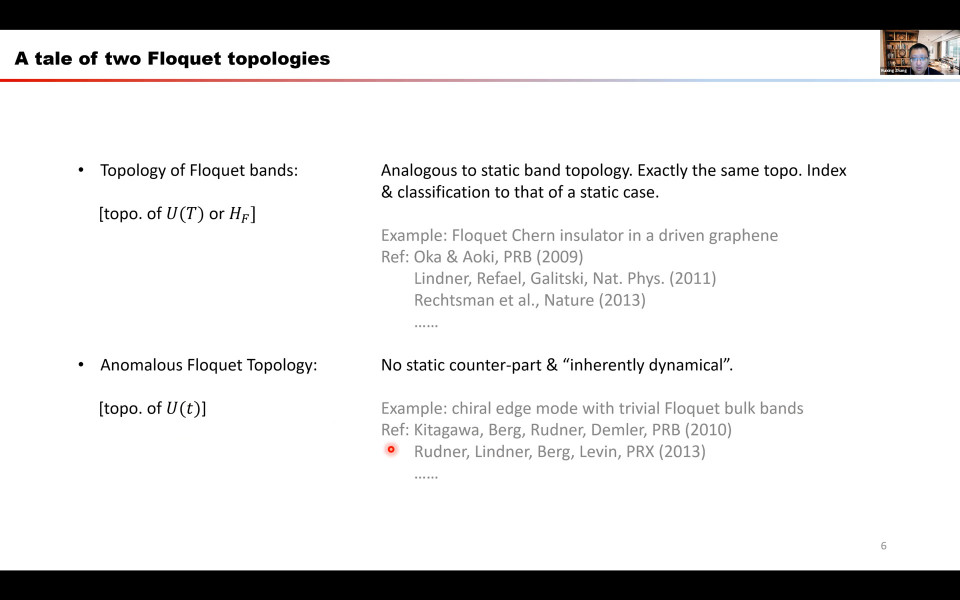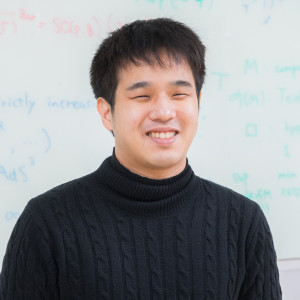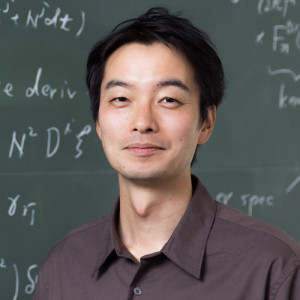Volume 153
Back to Newsletter List
Hot Topic
The work of a research group, including Dr. Maria Dainotti and Enrico Rinaldi, has been featured in several institutional press releases and websites
2021-06-01
The work of a research group, including Dr. Maria Dainotti and Enrico Rinaldi, has been featured in several institutional press releases and websites.
One of the most famous open problems of modern cosmology is the Hubble constant (H0) tension. This consists in the discrepancy (>4 sigma) between the values of H0 measured with the late universe local probes, namely the Supernovae Ia (SNe Ia), and the early universe observations, the Cosmic Microwave Background (CMB) radiation. With our investigation we found that a slow evolution with redshift is present in this constant thus allowing to alleviate this discrepancy. The study is published in ApJ. The investigation started when Dr. Maria Dainotti (now Assistant Professor at NAOJ) and Enrico Rinaldi (now Research Fellow at Michigan University) were Senior Research Scientist and Visiting Scientist both at iTHEMS, respectively.
See related links for details.
Reference
Seminar Report
Quantum Matter SG seminar by Dr. Rui-Xing Zhang on May 26, 2021
2021-05-31
On May 26th, Dr. Rui-Xing Zhang from the University of Maryland gave a talk about the classification of anomalous floquet higher-order topological insulators. He started with a pedagogical introduction to floquet topological insulators, which possess robust boundary states. Notably, there are two types of non-trivial floquet topology. 1. The floquet bands inherit the topology of the static bands. 2. The non-trivial physics of the anomalous floquet topological insulators stems from dynamical phase bands. Dr. Zhang extended the idea of the second type to higher-order topological insulators, which have robust corner states or edge ones. Dr. Zhang specifically discussed the anomalous floquet topology for chiral symmetric systems preserving C2 rotation symmetry. Using this example, he generalized the classification of the topological phases to various point groups. We thank Dr. Zhang for giving this wonderful talk.
Reported by Ching-Kai Chiu
Theory of Anomalous Floquet Higher-Order Topology
May 26 (Wed) 22:00 - 23:15, 2021
Upcoming Events
Seminar
iTHEMS Math Seminar
Stable eigenvalues of compact anti-de Sitter 3-manifolds
June 18 (Fri) 16:00 - 18:10, 2021
Kazuki Kannaka (Special Postdoctoral Researcher, RIKEN Interdisciplinary Theoretical and Mathematical Sciences Program (iTHEMS))
Geometric objects that have been investigated in detail so far, such as closed Riemann surfaces, are sometimes locally homogeneous. Loosely speaking, their infinitesimal behavior is the same at each point. In this talk, I would like to explain the idea of investigating such objects using the Lie group theory.In the first part of the talk, I will recall the notions of Lie group actions and their quotient spaces with examples, and then explain the definitions of locally homogeneous spaces and their deformations (Teichmüller spaces). In the second part of the talk, I will consider anti-de Sitter manifolds as a special case, i.e., Lorentzian manifolds of negative constant curvature. As in the Riemannian case, a differential operator called the Laplacian (or the Klein-Gordon operator) is defined on Lorentzian manifolds. Unlike the Riemannian case, it is no longer an elliptic differential operator but a hyperbolic differential operator. In its spectral analysis, new phenomena different from those in the Riemannian case have been discovered in recent years, following pioneering works by Toshiyuki Kobayashi and Fanny Kassel. I would like to explain stable eigenvalues of the hyperbolic Laplacian of anti-de Sitter 3-manifolds with recent progress.
Venue: via Zoom
Event Official Language: English
Seminar
DMWG Seminar
Precise WIMP Dark Matter Abundance and Standard Model Thermodynamics
June 24 (Thu) 16:30 - 17:30, 2021
Satoshi Shirai (Project Assistant Professor, Kavli Institute for the Physics and Mathematics of the Universe (Kavli IPMU), The University of Tokyo)
We are now living in the era of precision cosmology. The relic abundance of dark matter (DM) is now observationally well-determined, and its error is smaller than O(1)%. This means that the same or much higher precision is required when we make theoretical predictions.
Weakly Interacting Massive Particle (WIMP) has long been the leading candidate for DM because of its beautiful mechanism to predict the observed relic abundance. WIMP is in the same thermal bath as the Standard Model particles in the beginning. At a certain point when the temperature of the Universe is smaller than the DM mass, it decouples to fix its number density. The yield of the DM is determined by its annihilation cross-section to the Standard Model sector.
It seems that there is no ambiguity in the calculation of this process at first: the cross-section is purely theoretical and all the remainings are described in the Standard Model physics. However, the source of the uncertainty does remain in the Standard Model sector. The dilution of the number density of DM particle depends on the expansion rate of the Universe, which is determined by the Standard Model particles. The effective degree of freedom (d.o.f) of the relativistic species controls this factor. We have to deal with the non-equilibrium dynamics to precisely describe the time-evolution of the d.o.f, in which we need numerical approaches.
In this talk, he introduced his work to update these calculations. By implementing the latest findings in the non-equilibrium dynamics in i) the neutrino decoupling, ii) the QCD phase transition, iii) the electroweak phase transition, and iv) the perturbative calculations, they found that the final d.o.f is smaller than the previous estimate in more than 1%. This is larger than the level of precision in observations. It is also important that the uncertainty is quantified by them.
Another good news is that he makes the calculated d.o.f with its error publically available. With these updates, we now correctly know the points to probe DM!
Venue: via Zoom
Event Official Language: English
Colloquium
iTHEMS Colloquium
Quantitative Population Dynamics in Interdisciplinary Biology
July 8 (Thu) 10:30 - 12:00, 2021
Shingo Iwami (Professor, Graduate School of Science, Nagoya University)
Through the course of life, from the moment of birth till death, an organism will achieve various states of equilibrium or ‘homeostasis’ which will inevitably encounter perturbations. The processes of cell growth, differentiation, infection, mutation, evolution and adaptation work together as a coordinated ‘system’, described by mathematical models for population dynamics, to maintain a healthy state. Any disruptions to this system leads to disease including infection, allergy, cancer, and aging. We are conducting interdisciplinary research to elucidate “Quantitative Population Dynamics” through the course of life with original mathematical theory and computational simulation, which are both our CORE approach. Our mathematical model-based approach has quantitatively improved a current gold-standard approach essentially relying on the statistical analysis of “snapshot data” during dynamic interaction processes in life sciences research. In this talk, I will explain how our interdisciplinary approach extends our understanding for complicated clinical data and apply real world problem with an example of the Novel Coronavirus Disease, COVID-19.
Venue: via Zoom
Event Official Language: English
Person of the Week
Self-introduction: Ryo Namba
2021-05-28
Pursuit of the fundamental law that governs the evolution of our universe, is the end goal of cosmology. Our universe is known to be expanding. It is not only expanding, but has been, and perhaps will be, expanding. The driving force of the current accelerated expansion, often called dark energy, is still beyond our understanding, despite that the fate of the universe entirely depends on the nature of dark energy. Furthermore, cosmological observations provide indications that an accelerated expansion also took place at the earliest stage of our universe, known as inflation, and that the seeds of all the structures we observe today were encoded during this period. Thus the physics in the inflationary era is of essential importance, fixing the initial conditions of our universe. The forthcoming advancement of multi-messenger (photons, neutrinos, and gravitational wave), multi-frequency observations opens up the possibility of probing such cosmological signals in novel manners.
My research focus is encapsulated in the studies of interactions at cosmological scales, ranging from the highest-energy processes at the onset of the universe to the laws of gravity at the largest distances, by making use of the knowledge of quantum field theory, elementary particle physics and gravitational theory as technical tools. Interactions in cosmology are inevitably those in a gravitating system, and they reserve a large domain of unresolved mysteries that provide a fascinating ground to explore. Understanding the physics in both ends of these extremes is necessary to reveal the origin and fate of our universe. Many different branches of physics are involved in this research adventure, and extending the border of scientific disciplines is of essential importance.
[Brief academic history] I received my Ph.D. from the University of Minnesota (USA), and continued my research activities as a postdoctoral researcher at Kavli IPMU (Japan), McGill University (Canada), and Tsung-Dao Lee Institute (China), before joining RIKEN iTHEMS in May 2021. I have worked on research projects on particle production in the early universe, thermalization process (reheating), modified gravity theories (scalar-vector-tensor theories, massive/bimetric gravity), etc.
If you would like to cancel your subscription or change your email address,
please let us know via our contact form.
Copyright © iTHEMS, RIKEN. All rights reserved.






